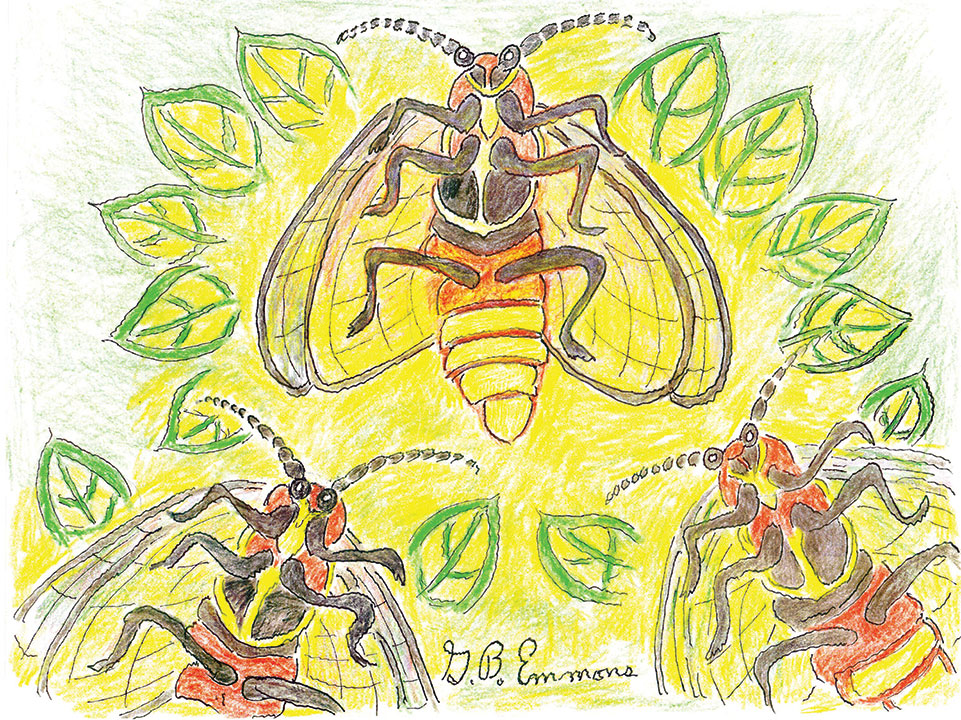Suddenly in midsummer nightfall, fireflies appeared outside our windows looking over Little Bay in Fairhaven, as darkness settled in along the coastline, giving them a dark background against which to shine brightly for the mating emanation of the annual season.
As a member of the Lampyridae insect family, the firefly is actually a beetle that burrows and hibernates in the ground for the winter, or daily behind the bark of a dead tree.
This iconic display of a reproductive orchestration of lighting, an earthly pyrotechnic display, is truly a ritual of signals to find a mate. The male begins with an attention-getting impulse for finding and courting a receptive female. He begins with four or five impulses and then waits for the same amount of time before repeating his inquiry. The coquettish female, playing hard to get, waits in the grass before answering two or three replies and then waits a few more seconds before blinking back her acknowledged consent for reproduction.
As this romantic communication clearly indicates to members of the human race that love is in the air for fireflies, so Shakespeare in the year 1600 wrote his play inspired from personal observation entitled “A Midsummer Night’s Dream.” Taking his own poetic license from this scene, he portrayed the twilight image of dancing fireflies, indicating that love itself is an act of nature. His deduction in modern research seems to be supported in places like Great Smoky Mountains National Park in North Carolina and Tennessee, where all the fireflies there at one time seem to light up in waves, somehow orchestrated simultaneously as a command performance of natural conditions, all interacting together as a timely earthly force. Ah, the wonder of it all.
My illustration is from looking at the body of the firefly upside down, showing the lower abdomen where the energy for the glowing light is created by a network of fatty passages feeding oxygen through tissues that glow with a very bright, but also a very cool light, with no heat. From this remarkable incendiary, children incorrectly label them as lightning bugs or glowworms, collected in a glass jar to illuminate their bedroom at night, bright enough to read by. Similarly, in Japan, fireflies are collected to make a charming outdoor lantern, with each flame representing the spirit of a samurai warrior who died bravely in battle. Those that gave their lives honorably were honored in a paranormal memory that glowed in the dark.
Fireflies are very beneficial insects to have around. They don’t bite, have no pincers, they don’t attack, don’t carry disease, and are not poisonous to humans. They contain luciferin and luciferase, two rare chemicals used in research in cancer, multiple sclerosis, cystic fibrosis, and heart disease. Their numbers are unfortunately on a serious decline because of light pollution in urban development and also building projects replacing traditional habitats. They are very nice in your garden by eating bugs and insect pests. Their presence in your back yards is a favorable bellwether of a healthy atmosphere.
May the mystical and magical firefly continue to light up our summer evenings with awareness of their true meaning and significance.
By George B. Emmons
